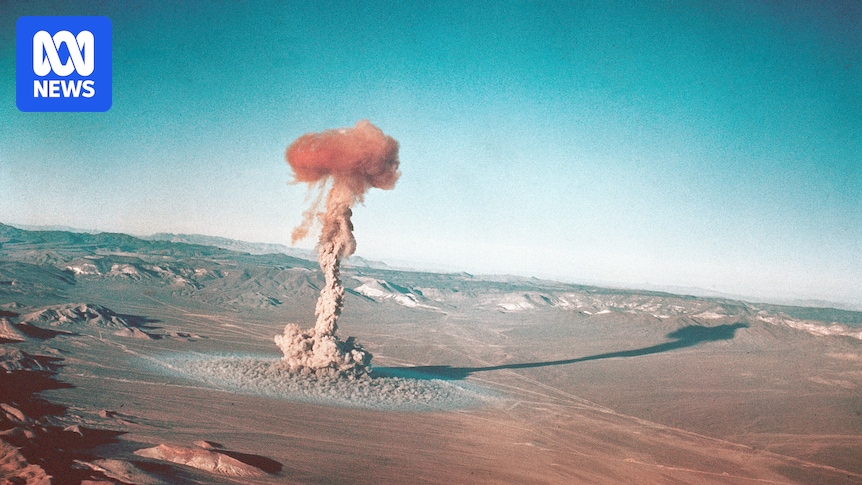
Shortly before a pivotal meeting with Chinese President Xi Jinping in South Korea, US President Donald Trump took to social media to announce his directive for the Pentagon to “immediately” resume nuclear weapons testing. He justified the move by stating that other nations “seem to all be nuclear testing.” Addressing reporters aboard Air Force One, Trump asserted, “We have more nuclear weapons than anybody. We don’t do testing. I see them testing and I say, well, if they’re going to test, I guess we have to test.”
The United States has refrained from conducting explosive nuclear weapons tests for 33 years. Trump’s announcement has not clarified the specific nature of the testing he envisions, beyond a desire to be “on equal basis” with other countries. Experts warn that resuming such tests would mark a perilous escalation, particularly at a time when nuclear threats are intensifying globally.
The Legacy of Nuclear Testing
The prospect of renewed nuclear testing evokes stark images of mushroom clouds and the environmental devastation of past decades. Prior to the 1963 Partial Test Ban Treaty, atmospheric and underwater nuclear tests were commonplace, with explosive tests creating towering columns of water and steam. The treaty significantly curtailed these practices, pushing tests underground.
Nobel Peace Prize laureate Professor Tilman Ruff, a founding member of the International Campaign to Abolish Nuclear Weapons (ICAN), highlighted the historical impact of these tests. “More than 2,000 nuclear explosions were detonated worldwide between 1945 and 1996,” he explained. “Those tests dispersed radioactivity uncontrollably all over the world.”
“All of us bear in every cell of our bodies fallout from past nuclear weapons tests. And subsequent generations will for many thousands of years hence. There will be, in total, several million excess cancer deaths from that fallout.” — Professor Tilman Ruff
Since the late 1990s, only North Korea has conducted nuclear tests. The US military continues to test missile systems capable of delivering nuclear warheads but has not detonated a nuclear device since 1992.
Potential Sites and Risks of US Testing
Trump’s comments leave ambiguity regarding whether he refers to testing nuclear delivery systems or explosive nuclear testing. When questioned about potential test sites, he mentioned, “It’ll be announced. We have test sites.” The US maintains extensive facilities in Nevada, previously used for underground tests, though these have been inactive for decades.
Dr. Ruff expressed concern over the potential reactivation of these sites, noting that it would require significant time and resources to modernize and recommission the equipment. Even underground tests pose risks, as Margaret Beavis, co-chair of ICAN, pointed out. “If underground nuclear tests ‘vent’ to the surface, they can produce considerable radioactive debris and potential leakage into groundwater,” she warned.
“Contaminated, radioactive contaminated water is pretty problematic.” — Dr. Margaret Beavis
Debunking Trump’s Claims
Vice President JD Vance defended the need for testing to ensure the US nuclear arsenal’s functionality but did not specify the type of tests ordered by Trump. The president’s assertion that the US has more nuclear weapons than any other country was contradicted by experts. According to the Arms Control Association, the US holds 5,225 nuclear warheads, while Russia possesses 5,580.
Dr. Ruff criticized Trump’s statement for containing factual inaccuracies. “The US doesn’t have the largest nuclear arsenal,” he said. “And nobody is conducting nuclear explosive testing at the moment, as implied.”
The Comprehensive Nuclear Test Ban Treaty, which the US signed but did not ratify, has been observed since its adoption by all countries possessing nuclear weapons; North Korea is the only exception.
Global Reactions and the Path Forward
Trump’s comments coincided with Russia’s announcement of tests involving nuclear-capable cruise missiles and sea drones. Kremlin spokesperson Dmitry Peskov clarified that these drills “cannot in any way be interpreted as a nuclear test.” Russian President Vladimir Putin has stated that Russia would resume testing if any other country does so.
Professor Stephan Fruehling from the ANU’s Strategic and Defence Studies Centre believes Trump’s remarks are a strategic signal to Russia, indicating that the US could match any nuclear provocations. “I think that this is sending a signal to the Russians that don’t think that by playing on nuclear fears that’s going to be effective … in the end, America can do the same,” he said.
The Stockholm International Peace Research Institute (SIPRI) reports that nine countries currently possess nuclear weapons. In recent years, many of these arsenals have been expanded and modernized. Dr. Ruff emphasized the urgency of addressing nuclear proliferation, noting that “the number of nuclear weapons are going up again, particularly the militarily deployed and high alert weapons.”
“The only way you can respond to nuclear war is to stop these weapons from being in existence. And the only way to do that is to increase pressure on the countries to disarm.” — Dr. Margaret Beavis
As the last remaining nuclear arms treaty is set to expire, Dr. Ruff highlighted the importance of the UN Treaty on the Prohibition of Nuclear Weapons, which has been signed by half of the world’s nations. However, key nuclear states and their allies, including Australia, have yet to endorse it. Dr. Beavis urged Australia to fast-track its signature to demonstrate opposition to nuclear weapons.







